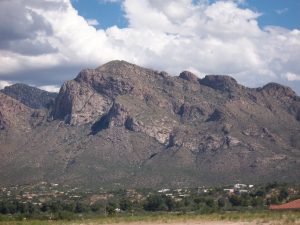Oro Valley has been a site of rich history and culture since the Native American tribes inhabiting it centuries ago, to being part of Pima County, Arizona today. After Franciso Romero and George Puch settled in the valley in 1869 and 1874 respectively, the area continued to see an influx of migrants with homesteads built by settlers in the 1900’s. A few decades later, affluent ranchers, such as Joseph McAdams, acquired thousands of acres of land from the original settlers due to their interest in vacationing and living in the desert.
The Vibrant History of Oro Valley
Oro Valley has a vibrant history, with its roots stretching back centuries. Located in the western foothills of the Santa Catalina Mountains at the base of Pusch Ridge, the area was previously inhabited by the Hohokam and Apache tribes before the Spanish Conquistadors arrived. It is now part of Pima County, Arizona, and is a proud suburban town to call home.
Following the Gadsden Purchase and the end of the Mexican-American War in 1848, American settlers began to move into the Arizona Territory. After the American Civil War, many Tucson settlers relocated north and established Oro Valley. Francisco Romero founded a cattle ranch in present-day Catalina State Park in 1869 while George Pusch, a German immigrant, settled in the area by establishing the Steam Pump Ranch of the Cañada del Oro – a watershed channel in the valley of Tucson – after 1874. This ranch was particularly popular due to its source of water, a steam pump.
Between 1903 and the 1940s, many homesteads were developed in the area by settlers such as Francisco Marin, Francisco Aragon, Jesus Elias, Ina Gittings, Margaret Moodie, Mabel Burke Johnson, David Morgan, James Reidy, and William Sutherland. During the 1930s to 1960s, affluent ranchers like Joseph McAdams, Larence Rooney, John Procter, Lloyd and Betty Golder, and Walter McDonald acquired thousands of acres of land from the original settlers who had built up their properties over time. These wealthy ranchers had all vacationed in Tucson at one point or another and developed an interest in living part-time in the desert.
It was in the early 1950s that Oro Valley Country Club opened, signifying the area as an affluent community. In 1974, Oro Valley was incorporated as a town and proudly took its name from the Oro Valley Country Club. With a total area of 31.9 square miles and a population of 41,011 people as of the 2010 census, Oro Valley has earned the title of “Upscale Tech Mecca” of Southern Arizona due to the more than 10 high-tech firms that have set up shop in the town.
Established in 1978
The 56,430-acre Pusch Ridge Wilderness Area is a stunning part of the Coronado National Forest of the Santa Catalina Mountains. It was established in 1978 to protect and preserve the Desert Bighorn Sheep population on Pusch Ridge, which consists of three distinct peaks – Table Mountain, Bighorn Mountain, and Pusch Peak. With the US Forest Service governing the area, visitors can experience its breathtaking beauty by accessing the Pusch Ridge Trailhead from East Linda Vista Boulevard in Oro Valley.

Championship Accomplishments
Oro Valley Country Club is a proud member of the local community, having served residents of Oro Valley since 1959. Designed by Robert Burce Harris, it boasts an 18-hole, par-72 golf course, swimming pool, tennis courts, clubhouse, and dining area. In 1987, Oro Valley Country Club was the host of the very first Pacific-10 Women’s Golf Championships and continued to be the host of the 20th Pac-10 Conference Women’s Golf Championships in 2006 and the Southwest Section PGA Championship in 2008. These accomplishments demonstrate the club’s commitment to providing excellent facilities for all its members.
Oro Valley has served as a prosperous home to a variety of homesteaders and ranchers throughout the years. After Francisco Romero successfully managed the cattle ranch in 1869, various Tucson settlers gradually began to move north due to the Gadsden Purchase marking the end of the Mexican-American War and establishing their properties in the area. Afterward, wealthy ranchers from around the country developed an interest in vacationing and living part-time in the desert. Today, Oro Valley appropriately stands as a testament to its diverse and unique past by providing its proud suburban residents with an anchor of historical identity.
[button link=”https://abuseguardian.com/history-of-oro-valley-arizona/” newwindow=”yes”]Learn More About Oro Valley’s History![/button]



